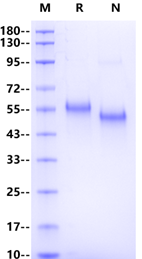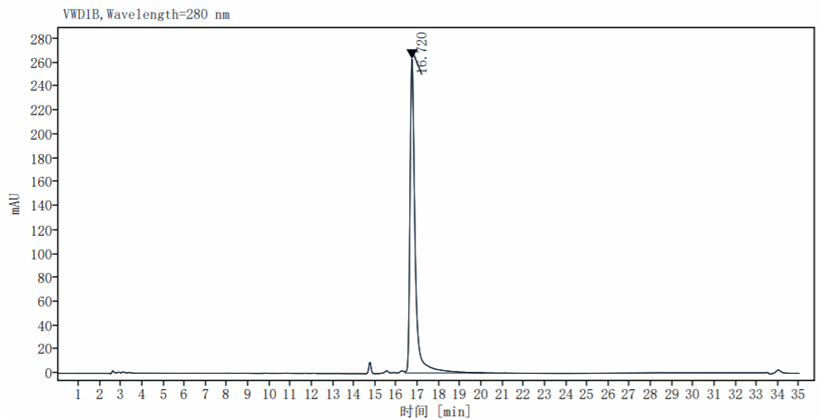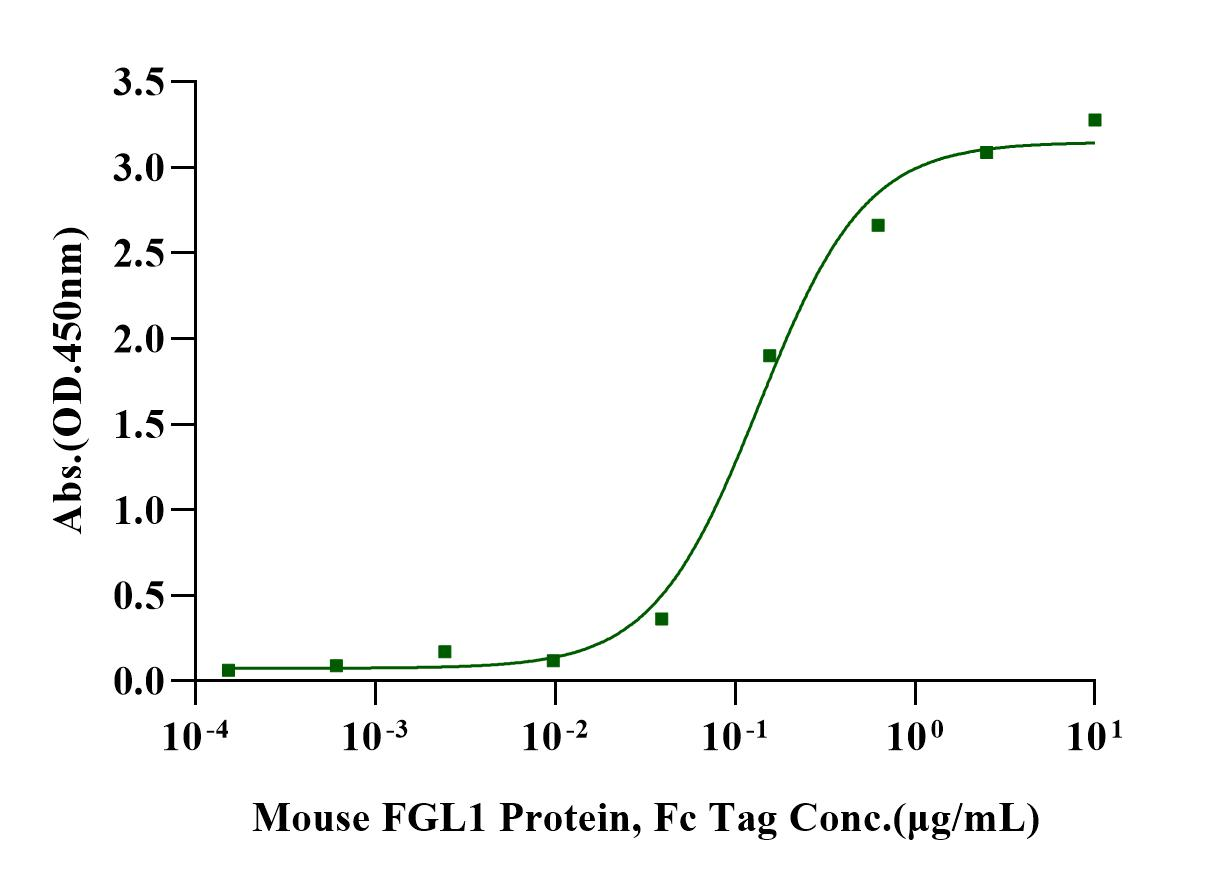Gly24-Glu422, with C-terminal 8*His GPGKELPVVWAQEGAPVHLPCSLKSPNLDPNFLRRGGVIWQHQPDSGQPTPIPALDLHQGMPSPRQPAPGRYTVLSVAPGGLRSGRQPLHPHVQLEERGLQRGDFSLWLRPALRTDAGEYHATVRLPNRALSCSLRLRVGQASMIASPSGVLKLSDWVLLNCSFSRPDRPVSVHWFQGQNRVPVYNSPRHFLAETFLLLPQVSPLDSGTWGCVLTYRDGFNVSITYNLKVLGLEPVAPLTVYAAEGSRVELPCHLPPGVGTPSLLIAKWTPPGGGPELPVAGKSGNFTLHLEAVGLAQAGTYTCSIHLQGQQLNATVTLAVITVTPKSFGLPGSRGKLLCEVTPASGKERFVWRPLNNLSRSCPGPVLEIQEARLLAERWQCQLYEGQRLLGATVYAAEHHHHHHHH
55-60kDa (Reducing)
>95% by SDS-PAGE&RP-HPLC
PBS, pH7.4
Reconstitute at 0.1-1 mg/ml according to the size in ultrapure water after rapid centrifugation.
· 12 months from date of receipt, lyophilized powder stored at -20 to -80℃.
· 3 months, -20 to -80℃ under sterile conditions after reconstitution.
· 1 week, 2 to 8℃ under sterile conditions after reconstitution.
· Please avoid repeated freeze-thaw cycles.
Lymphocyte-activation protein 3 belongs to Ig superfamily and contains 4 extracellular Ig-like domains. The LAG3 gene contains 8 exons. The sequence data, exon/intron organization, and chromosomal localization all indicate a close relationship of LAG3 to CD4. The LAG3 is Biased expression in spleen (RPKM 15.1), lymph node (RPKM 8.3) and 12 other tissues. Lymphocyte activation gene 3 (LAG3) is an inhibitory checkpoint protein expressed on activated T effector, T regulatory, and natural killer cells. The main function of LAG3 is the regulation of immune homeostasis. Several studies have suggested its role in malignant and autoimmune diseases.



Immobilized LAG-3/CD223 His Tag, Mouse (Cat. No. UA010126) at 2μg/mL (100μL/well) can bind Mouse FGL1 Protein, Fc Tag with EC50 of 0.096-0.21μg/ml.